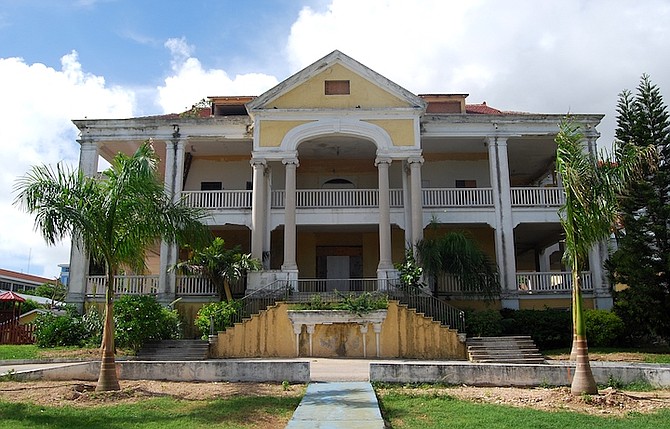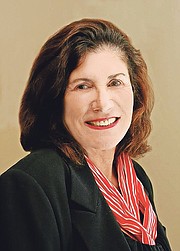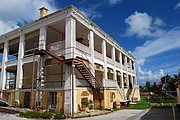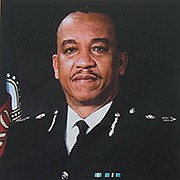Collins House, built more than 200 years ago, served first as a residence then later as the first campus for St Andrews School, and more recently as the Ministry of Education.
THERE’S a Joni Mitchell song whose lyrics are timeless: ‘Don’t it always seem to go that you don’t know what you’ve got ‘til it’s gone … They paved paradise, put up a parking lot.’
Don’t it always seem to go that we keep paving paradise and putting up something or maybe nothing or planning to put up something and not doing anything more than tearing down what somebody put up before?
Well, before we don’t know what we had ‘til it’s gone and it’s too late to rescue it, can we please take a good, hard and respectful look at the last manse standing near the heart of Nassau, Collins House?
Built more than 200 years ago, the original wooden Collins House – officially Centreville House - was obliterated by the hurricane of 1929. It was rebuilt of solid concrete. Its massively thick walls and tall windows framed a colossal 35,000 square foot, four-storey-high structure that served first as a residence, later as St Andrews’s School and finally as the Ministry of Education when Dame Ivy Dumont was Minister.
Collins House sits proudly atop a hill overlooking Nassau harbour, anchored by Shirley Street on the north, Collins Avenue on the east and PMH to its west. It claims five acres of prime real estate with its grounds reflecting its double personality – to the south, a parking lot and modern featureless two-storey building that houses the Antiquities, Monuments and Museums Corporation (AMMC), and in front, across from The Tribune but hidden by high black wrought iron gate lies a garden oasis, thanks to efforts of a committee of a decade ago.
Restoration efforts have started and stopped as age and disrepair threaten to advance faster than funds can be found to rescue the last remaining grand dame of architectural perfection, combining beauty with utility. On a walk through with the late Charles Maynard, then Minister of Youth, Sports and Culture, the minister and I, along with a few others from the Historic Bahamas Foundation and ZNS traipsed three of its four floors. It was mid-July, 2007, and though the minister wore suit and tie, neither he nor any of us broke a sweat. Its 13ft ceilings and natural cross ventilation was better than any artificial means of cooling.
It would be nearly impossible to recreate the majestic masterpiece today with its once rich mahogany woodwork, wrap around verandahs, high ceilings, wood floors, natural cross ventilation, hand-hued morticed shutters, remarkably intact original wooden roll downs, a stunning staircase, marble columns and great rooms that held their share of events. Collins House was well ahead of its time with an internal vacuum system that ran through the walls from floor to floor, featured bedrooms with en suite baths with modern plumbing equipment. The front mahogany glazed doors with heavy panels imported from France opening into an entrance hall nearly 24ft long with a dining room of 25ft by 23ft on one side and a 33ft long living room on the other. Construction work was supervised, so history tells us, by a remarkably skilled carpenter, John Gomez, who went on to form Nassau Tile Company.
The property was originally deeded, so history also tells us, to Wilhemina and Charlotte Christie in the late 1790s though it is not known whether they ever lived there. It changed hands several times, even being left to two sisters at one point. The house takes its nickname from the last residential couple to occupy it, Ralph and Marianne (nee Brice) Collins. Mr Collins, an MP, liquor merchant and for a period of time, president of the Bahamas Sponge Exchange Co, was a flamboyant businessman and the gardens were alive with activities from Red Cross Fairs to social events. But once inside their magnificent manse, it’s said that the Collins slept in opposite corners of the home, as far from one another’s room as the house would allow.
The rest are gone. The Royal Victoria Hotel built in 1861, closed in 1971, demolished, the Fort Montagu Hotel built in 1926 to meet the demands of a growing tourism market, its 200 rooms, famous see-through swimming pool, tennis courts and grounds gone, now the site of modern office buildings. So few of the treasures remain. When the Ministry of Education moved out, the government turned Collins House over to AMMC and the announcement was made – it WILL become the National Museum of The Bahamas. If Villa Doyle demonstrated that an irreplaceable stately structure could be restored and emerge a cultural and commercial success, the better situated, grander Collins House could render even greater return on investment.
Remembering Paul Farquharson
The news of Ret Police Commissioner Paul Farquharson’s death sent shockwaves through the law enforcement community. It was only weeks ago he was attending meetings, appearing on radio supporting the Bahamas Peace Plan, stopping by Montagu to talk with friends. It was only late last year that he wanted to write a book. It was my great honour that when it happened, he wanted me to help him tell the story.
I first met him in the early 1990s when he succeeded BK Bonamy on the original founding committee of Safe Bahamas. The country was reeling from the drug trade. Business had overdosed on the flow of ill-gotten gains. A generation was overdosing on the chemicals that produced those gains. Everyone was trying to get a handle on how to stop it. Farquharson never batted an eye. He went about his business, as free of politics as a man in the position of top cop could be, head held high, dressed in the armor of integrity. Then Minister of National Security Frank Watson never doubted his choice nor questioned his actions.
Paul Farquharson, one of a kind and a man who with a soft heart held down a hard, hard job and did it with grit and grin.








Comments
birdiestrachan 9 months ago
Those who are hurry to tear down buildings ,Historical buildings should consider the white house great cathedrals still stand,
sheeprunner12 9 months ago
When Charlie died, so did the plans for the National Museum at Collins House.
It's been over TEN years and the place still sits there.
This country NEEDS a National Museum, but our present politicians don't have any vision.
Sign in to comment
Or login with:
OpenID